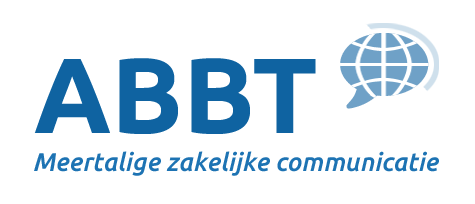Simultaneous Interpreting
Simultaneous interpreting means that the interpreter listens to the speaker and conveys the meaning of the spoken text at the same time into another language or into sign language.
When a deaf person uses sign language, the sign language interpreter converts the signs into spoken Dutch.
Simultaneous interpreting can be used in different situations, with or without interpreting equipment.
With booth and interpreting equipment
Booth interpreters work in pairs from a soundproof booth located in the conference hall. They can see what is happening in the room and hear the speaker through their headset. They interpret simultaneously what is being said, so that participants in the audience can hear the speech in their own language through their headphones.
Advantage of booth interpreting:
No time is lost. All participants can respond immediately to what is being said, allowing a lively discussion without language barriers.
Simultaneous interpreting with a tour guide system
In a meeting or discussion with a small number of participants, a portable tour guide system can be used.
The interpreter speaks into a handheld microphone, and the listeners receive the sound through their headsets.
This method requires some discipline from those present to avoid talking over each other.
The interpreter does not wear a headset and therefore hears not only the speaker’s voice but also all background noises in the room.
Whispered interpreting (chuchotage) without equipment
This is another form of simultaneous interpreting in which the interpreter whispers the translation at the same time for one or two people.
A single interpreter can never whisper-interpret for more than one or two listeners.
Disadvantage of whispered interpreting:
The interpreter’s constant whispering can be disturbing for others who are listening directly to the speaker.
Those who rely on the whispered interpreter cannot easily take part in the discussion themselves.
Consecutive Interpreting
Consecutive interpreting means that the interpreter first listens to the speaker, possibly takes notes, and only after the speaker has finished, interprets what was said into the target language or sign language.
Advantage:
No interpreting equipment is required, and the participants have more time to think and take notes.
Disadvantage:
It takes twice as long. This form of interpreting is not suitable when several foreign languages need to be interpreted simultaneously and is not conducive to lively discussion between participants.
A combination of simultaneous and consecutive interpreting also occurs.
Would you like to experience the stress of simultaneous interpreting yourself?
Try speaking into a microphone while at the same time rephrasing in your own words what is being said on television — for example, during the news.
You may not fall behind and must finish your sentences properly.
Then try the same exercise again, but this time from a foreign language into Dutch.
As Many Interpreters, As Many Sentences
Conference Interpreter
Conference interpreters work at international conferences and meetings.
They always work in teams of at least two per booth.
Generally, they interpret only into their mother tongue — also called their A language — often from several B or C languages.
The booths and interpreting equipment must meet strict technical requirements and are usually provided by a specialised technical agency.
During the conference, a qualified technician must monitor the sound quality and the headphones provided to the participants.
Dialogue Interpreter
Dialogue interpreters (also known as liaison or community interpreters) act as a bridge between two or more conversation partners who do not understand each other’s language.
The interpreter conveys what is said after each utterance.
Dialogue interpreters generally work in two languages: they interpret both from the foreign language into their mother tongue and vice versa.
This form of interpreting does not require interpreting equipment.
Sworn Interpreter
Sworn interpreters mainly work for government institutions — in the courts (in the Netherlands, court interpreters; in Belgium, still mostly ad hoc sworn liaison interpreters) and for police and immigration services.
This work requires broad social and legal knowledge.
Court interpreters work both consecutively and simultaneously.
They master the legal terminology of their working languages and also possess knowledge of the legal systems of both their own and the other country.
In Belgium, this situation will soon be formally regulated by law.
Wiretap Interpreter and Telephone Interpreter
Wiretap interpreting and telephone interpreting are specialised forms.
When interpreting recorded or monitored phone calls (taps), the interpreter translates the foreign-language conversation into Dutch for the investigating officer, who then draws up an official report.
Telephone interpreters, on the other hand, interpret live phone conversations between two people who do not speak each other’s language, working from their own workplace.
As with wiretap interpreting, there is no visual contact between the speakers, and the communication is not supported by body language, which makes this type of interpreting technically demanding.
Sources
Directorate-General for Interpretation, European Commission
RLN-NW / CILT brochures: Business Interpreting, Interpreting for the Public Services, Conference Interpreting
Chris Durban: brochure Translation – Getting It Right and related suggestions
